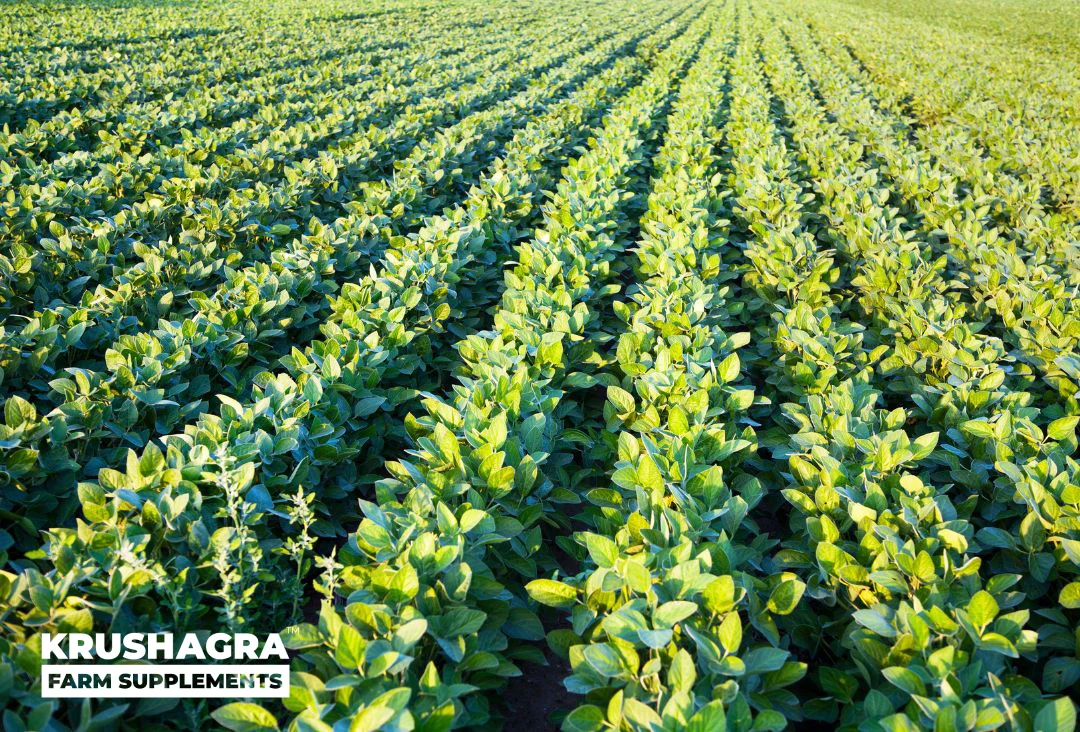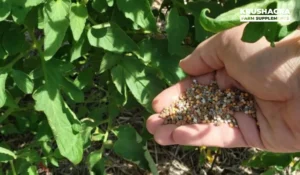Soybean is a leguminous crop that is cultivated mainly in the rainy seasons in central and peninsular India. Like other legumes, this crop is also well-known for its N2-fixing ability and is therefore used in crop rotation. Rhizobium inoculant is approved as the best biofertilizer for leguminous crops like soybean as it can provide adequate nitrogen in a soluble form that is required for crop growth.
Characteristics of Rhizobium
- Rhizobium biofertilizer is a substance that has living microorganisms and is applied to plant surfaces, seeds, or soil.
- It is a mobile gram-negative bacterium and exists in the form of non-sporulating rods that fixates atmospheric nitrogen.
- This bacteria is commonly found in the soil and takes part in nodule formation after infecting the root of leguminous plants.
- It converts atmospheric nitrogen into a consumable form with the help of an enzyme named nitrogenase. As it cannot do the fixation on its own. They just generate the ability to fix nitrogen as a symbiont.
- It helps in developing soil fertility organically and increases the nutrient content in soil eventually nurturing a supportive environment for plants to grow.
- Rhizobium helps in curing nutrient deficiency, drought stress, salt stress, and harmful effects of pesticides and chemical fertilizers that are unhealthy for the plants in some manner.
Why Rhizobium biofertilizer is the best recommendation for Soybean crops?
Despite being a leguminous crop, a Soybean crop cultivated on soil having a scarcity of Rhizobium bacteria tends to utilize all the soil nitrogen. If the nitrogen level is less due to soil type or soil erosion, which is a common phenomenon today due to the use of chemical fertilizers and climate change, the chances of nitrogen deficiency are common.
Moreover, Rhizobium cannot survive much from one season to another season in the case of sandy soils. It is also important to inoculate the soil with rhizobium if soybean is to be cultivated for the first time.
How to apply Rhizobium biofertilizer to Soybean?
- Rhizobium colonizes the rhizosphere or the interior of the plant. It uses the host plant to fix atmospheric nitrogen and convert it into useful organic compounds, benefiting both, the bacteria and the plant. One can apply this inoculant through seed treatment or soil treatment.
- In seed-applied inoculation, the rhizobium is mixed with water to form a slurry that is used to coat the seed. It should be performed at least 24 hours before the sowing process. Plant into adequate soil moisture. Don’t plant and apply inoculum in dry soil. Dry soil reduces bacteria survival.
- In another way, the soil is treated with a granular or liquid rhizobium inoculant.
Precautions to take while applying Rhizobium on Soybean crops
- One should apply the inoculant to fungicide or insecticide-treated seed with care. The labeling of fungicides or insecticides should be verified once to ensure whether the pesticide product is appropriate for rhizobium or not.
- While applying a fungicide-treated seed, be sure that the fungicide has dried before applying it to inoculate the seed. Inoculation should NOT be mixed with fungicides and applied together.
- Rhizobium is a crop-specific biofertilizer, and one should use it likewise.
- Rhizobium should be stored properly in a cool space and not exposed to sunlight before use. In that case, go through the product labels and details to understand how to maintain this type of inoculant.
- It is safe to use a fresh biofertilizer product each year. Don’t use expired stock.
- Don’t freeze the inoculant as that will cause cell rupture on thawing.
- Check soil pH before injecting the inoculant. Apply lime if it is less than 5.5. Don’t expect the inoculant to work well in acid soils.
The introduction of soybean in India has helped improve the socioeconomic conditions of many marginal farmers as it is considered profitable as well as a great source to reduce soil erosion. Even with minimum agricultural inputs, and climate adversities, the crop can gather enough monetary returns for these peasants.
In 2022-23, the soybean harvest is supposed to surge by 3%. Having said that, the application of biofertilizers and organic manure is also rising due to the awareness of organic farming among peasants. Organic inoculants like Krushagra’s Nitfit RB are suitable for this kind of sustainable agriculture and can be applied to Soybean crops in India. Plus serve as the right source of nitrogen fixation in other leguminous plants like groundnut, red gram, green gram, lentil, cowpea, Bengal gram, and fodder legumes.






